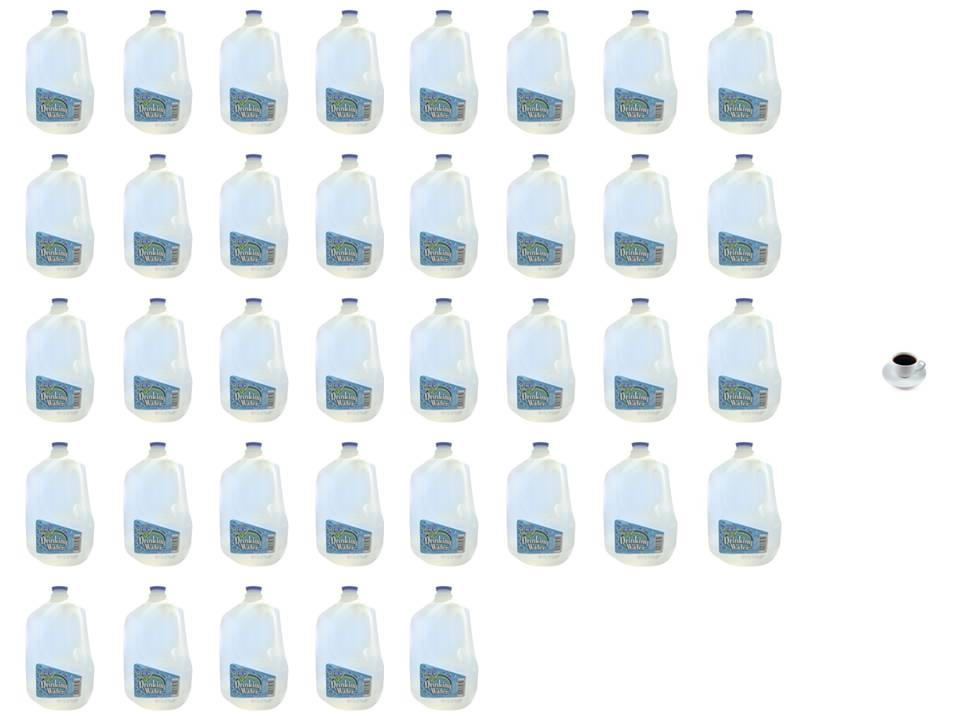Since early August, I have published at least one post per week on the relationship between coffee and water resources. In several of those posts I have made mention of coffee’s “water footprint” without much exploration of the concept. According to this excellent study, coffee’s water footprint is 140 liters (or 37 gallons) per cup.
While this data point is striking, the real value of the study for the coffee industry lies — as it often does in scientific research — in the details.
THE ORIGINS of THE “WATER FOOTPRINT”
The water footprint of coffee — or any other good or service, for that matter — is generally defined as the total volume of freshwater necessary to bring it to market.
water requirements for coffee PRODUCTION +
water requirements for coffee PROCESSING =
COFFEE’S WATER FOOTPRINT
The idea of a “water footprint,” which was first put forth formally in 2002, is a narrow application of a broader concept introduced a decade earlier — the ecological footprint. Whereas the ecological footprint measures the land area necessary to sustain a given population, the water footprint measures the water resources required. It can be applied to different populations and products, including coffee.
WET or DRY PROCESSING? FOR OVERALL WATER FOOTPRINT, IT DOESN’T MATTER.
The study suggests that in terms of the overall water footprint of coffee, it doesn’t matter very much whether farmers are wet-processing their coffee — a sequence that involves depulping, fermenting and washing — or processing it naturally — drying the coffee bean inside the cherry and eliminating altogether the need for water use in the coffee process.
For the overall water need in coffee production, it makes hardly any difference whether the dry or wet production process is applied, because the water used in the wet production process is a very small fraction (0.34%) of the water used to grow the coffee plant.
Does that mean we shouldn’t care how our coffee is processed?
WHY PROCESSING MATTERS: WATER SCARCITY and POLLUTION.
The study hastens to add that from a water security perspective, not all processing is created equal. Picking up where the previous quote leaves off, the authors explain that the small amount of water used in coffee processing is disproportionately important:
However, the impact of this relatively small amount of water is often significant. First, it is blue water (abstracted from surface and ground water), which is sometimes scarcely available. Second, the wastewater generated in the wet production process is often heavily polluted.
This caution seems to validate the analysis of water resource management in the coffee process that we have advanced here in recent weeks, underscoring the importance of coffee processing technologies that reduce water use and improve wastewater treatment.
VIRTUAL WATER IMPORTS.
The water footprint, unlike its intellectual forebears, includes a spatial dimension to show how consumers in one place indirectly employ the water resources in another. While the goods and services we consume may not have significant water content, we indirectly consume the water resources used at the sites where they were produced and processed. The water footprint tracks the movement, or “virtual transfer,” of water from sites of production and processing to consumption sites. When those transfers cross international borders, they become virtual water exports and imports.
Since coffee has a relatively large water footprint among agricultural products, and since so much coffee consumption takes place in countries where little or no coffee is grown — the United States, Europe, and Japan — the volume of virtual water we import along with our coffee is significant.
Why does it matter?
WATER JUSTICE.
Besides the water we use to brew our coffee, the water needed for us to drink coffee in the United States doesn’t come from the United States. It comes from remote communities in poor and middle-income countries, in some cases communities where water resources are scarce and the source of conflict. We almost never bear the real costs of those water resources, to say nothing of the social or environmental costs of water pollution from unregulated wet-milling operations.



